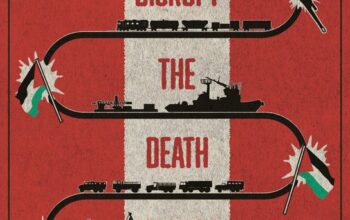War and peace have always been forces capable of changing the way we perceive the world. Through the centuries, wars have destroyed countries, created new ones, moved borders, divided or united people. They have shaped governments, politics, societies, and individuals. On the other hand, peace determines our wellbeing, the way we interact with other people, and it also plays a role in a country’s welfare and its relations with other countries. For these reasons, an analysis of how these forces move our world is crucially important. The Institute of Economics and Peace (IEP) has been trying to do so since 2008, when it issued its first Global Peace Index.
Global Peace Index: What is it?
The Global Peace Index is a yearly report that provides an accurate overview of the state of peace, conflicts, and violence all around the globe. The report lists 165 countries ranking from most peaceful to least peaceful and analyses peace in concrete terms, such as distribution and economic value. However, the definition of peace is not as simple as we may think. Even if a country is not involved in any war, it does not necessarily mean that it is a peaceful country, but factors such as crime and violence need to be considered. Therefore, the index uses 23 qualitative and quantitative indicators to measure the peace level in terms of Safety and Security, Ongoing Conflict, and Militarisation.
Despite recording improvement in 90 countries, Safety and Security deteriorated due to an increase in violent demonstrations and civil unrest. Since the beginning of the pandemic, the United States have been home to more and more protests caused by political discontent and human rights. Militarisation unexpectedly deteriorated because of an increase in military expenditure in 105 out of 163 GPI countries, in addition to rising tensions between the most powerful countries in the world.
Although we have witnessed several dramatic events during the past year, Ongoing Conflict seems to be the only parameter that improved (for the first time since 2015), recording a drop in the number of international and internal conflicts and a reduction of deaths from internal conflicts.
Taking into consideration these factors, the GPI has estimated that over 2021 the average level of peacefulness deteriorated by 0,07 percent, meaning that for the ninth time in 13 years the world has become less peaceful. According to the index, Europe is still in the lead as the most peaceful area in the world, hosting 8 out of the 10 most peaceful countries in the world (Iceland, Denmark, Portugal, Slovenia, Austria, Switzerland, Ireland). Unfortunately, the least peaceful area remains the Middle East and North Africa region (MENA), hosting 3 out of the 5 least peaceful countries in the world (Iraq, Syria, and Afghanistan).
Why is it important?
The index assigns a score from 1 to 5 each country, with 1 being the highest score and 5 being the lowest. It also gives a score from 1 to 5 to each one of the 23 indicators, thus becoming an incredibly useful tool to discover in which areas a country is more successful and in which ones it needs to improve. For example, Canada, number 10 in the global chart, has scores below 2 in almost every parameter, but could improve in access to weapons and violent demonstrations, both scoring 2.
The economic impact of violence
The IEP displays interesting data about the impact that violence has on world economy. In 2020, it was the equivalent to 11.6 percent of global GDP or $1,942 per person. The largest parts of the budget were spent on military expenditure (42,9%) and internal security (31,3%). Homicide and suicide represented the fourth and fifth largest parts (6.7% and 4.6%). Suicide represented 5.1% of the total, shockingly higher than the armed conflict impact; the reason for this is that suicide involves a series of economic factors such as healthcare costs, lost income for families, and costs associated with productivity loss for employers.
How to improve peacefulness?
If we take a closer look at the maps and the data, we will see that the most peaceful countries are also the ones that spend more on violence containment. Although those expenses weigh heavily on the economic impact of violence, they also make sure that countries remain more peaceful. But making sure that a country is safe from war and violence might not be enough. For this reason, IEP introduced the concept of Positive Peace, defined as the attitudes, institutions and structures that create and sustain peaceful societies (IEP, 2022, p.6). This model transforms peace from a static concept into a dynamic one that goes hand in hand with development. Countries that adopt this model see peace as both a goal and a chance of growth, since positive peace also means achieving economic strength, resilience, and wellbeing. IEP has established the following 8 pillars of positive peace:
1. Well-Functioning Government
2. Equitable Distribution of Resources
3. Free flow of information
4. Good relations with neighbours
5. High levels of human capital
6. Acceptance of the rights of others
7. Low levels of corruption
8. Sound business environment
These pillars are the very foundation to achieve positive peace. IEP actively promotes activities to implement the positive peace models in different settings. It has held workshops all over the world to give communities skills to analyse their territories and suggest local projects to build peace. Its goal is training 1 million people in positive peace. The countries where IEP has successfully carried out workshops are:
- Uganda
- Mexico
- Thailand
- Zimbawe
- Libya
In some cases, people who attended the workshops continued their training in positive peace, getting one step closer to a more peaceful world.
Francesca Cuomo
Resources:
Global Peace Index 2021, Institute for Economics & Peace.
Economic Value of Peace 2021, Institute for Economics & Peace.
Positive Peace Report 2022, Institute for Economics & Peace.



